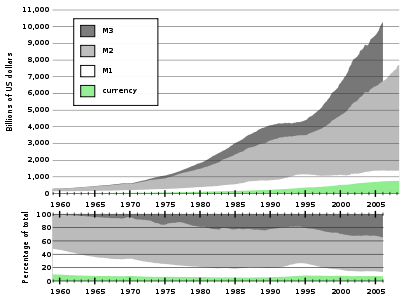Content

While eating food, if curry falls on the white clothes, a yellow stain is produced in the clothes. When we apply soap solution (basic in nature) on the cloth, the yellow stain becomes brown due to base present in soap solution. It so happens that the phenolphthalein has finished its colour change at exactly the pH of the equivalence point of the first half of the reaction in which sodium hydrogencarbonate is produced. The curve is for a case where the acid and base are both equally weak – for example, ethanoic acid and ammonia solution. In other cases, the equivalence point will be at some other pH.
We also learned that these indicators respond to changes in hydrogen ion concentration. When an acid-base indicator mixes with an unknown solution, a change in equilibrium to the weak acid and its conjugate base occurs. It is this change that causes a change in pH. A conjugate base is a compound that accepts a hydrogen ion from a weak acid. The undissociated form of the indicator is a different color than the iogenic form of the indicator. An Indicator does not change color from pure acid to pure alkaline at specific hydrogen ion concentration, but rather, color change occurs over a range of hydrogen ion concentrations.
Examples of Acid-Base Indicators
At high pH, the concentration of H3O+ is low, so equilibrium tends toward the right side of the equation and color B is displayed. Bowie dick test and several other chemicals dipped strips are used for sterilization checking. The color changes represent the completion of the sterilization cycle. Sterilization is a process of removing, killing, and even deactivating life forms on equipment and foods, etc. Physical monitors coupled with chemical indicators are used to check whether the whole sterilization cycle is completed or not. The autoclave process specifically requires an indication of completion of the sterilization cycle for which tape indicators come into play.
You have to choose an indicator which changes colour on the steep bit of the curve. Specificity of the indicators is also an important term to pick a good indicator. Such indicators are being used on electrical appliances like mobile phones to detect the level of humidity when it gets dangerous for the electrical circuit systems. When does phenolphthalein turn pink gives quite the perspective of why these theories are important.
What are Acids?
These types of indicators are used only in special or unusual applications. Since the end point involves the emission or quenching of emitted light it is not necessary that the solution be transparent. Thus, one application of fluorescent acid–base indicators is to use them in highly colored solutions.
Perform the spotting until you have at least three properly spotted circles. Where IN represents an organic structure with an acidic or basic site. To be useful the indicator must have contrasting colors between its acidic and basic form. A very useful method of end-point detection is by color change of an acid–base indicator. As in aqueous media, an indicator which changes color at or very close to the stoichiometric point is chosen.
During this process, an equilibrium shift between the weak acid-conjugate base must occur. It is this shift that supports the response from an acid-base indicator. This color change, in solution, corresponds to the pH value. You must be aware that the indicators are Thymol Blue, Methyl Orange, and Phenol Red are the most common indicators. It helps to indicate if the solution has turned into an acidic solution or a basic solution.
Examples of nonaqueous titration indicators
In studies of the metabolism of cells, redox indicators with their color or fluorescence changes are sometimes more convenient than potentiometry. The property of fluorescence (emission of radiant energy after first being activated or excited by a specific region of electromagnetic radiation) is also pH-sensitive. Thus, as the pH of the solution changes fluorescence may appear or be quenched at some particular pH value.

A systematic listing of the indicators is done by listing the potential at which the indicator changes color. Thus, by knowing the potential at the stoichiometric point the appropriate indicator can be chosen. (2) The visual discrimination error corresponds to the deviation that originates from the limited capability of the eye in remembering or comparing colors.
3: Acid-Base Indicators
In addition to the sensitivity of mixing time to the experimental technique employed, results in the literature also show the marked dependence upon impeller/vessel geometry. This geometrical influence is due to the effect that geometry has upon gross flow patterns and intensity of turbulence. PH paper contains several indicators and combines their pH ranges to offer an extended range of pH sensitivity. These papers display a unique color for each pH unit and come with their own color chart. When you pour water into acid, the amount of acid is higher, and that causes the production of excessive heat. On the other hand, when you pour acid into water, the amount of water is higher, and the heat produced is lesser.

Universal indicators are used to find out how strong the acid or base is, based on the color it reflects on the pH strip. The following are the colors indicating the pH range of a universal indicator when it is added to an acid or a base. Because a noticeable pH change occurs near the equivalence point of acid-base titrations, an indicator can be used to signal the end of a titration. When selecting an indicator for acid-base titrations, choose an indicator whose pH range falls within the pH change of the reaction. For example, in the titration of a strong acid with a strong base, the pH quickly changes from 3 to 11. The indicator phenolphthalein, whose range spans from pH 8 to 10, therefore makes a good choice for this type of titration.
If we add base, we shift the equilibrium towards the yellow form. This behavior is completely analogous to the action of buffers. In a perfect world we would love to keep everything in equilibrium. However, when the hydrogen ion concentration changes, a shift in equilibrium happens. When this happens, the acid-base indicator responds by giving off a color change. Relating this to pH range, recall that a color change corresponds to a pH value.
- Adsorption indicators change their color due to the adsorption of substances on their surfaces.
- The ______ is referred to as the point where the indicator changes color.
- Using our pH scale, we also see that this color change corresponds to a pH value of 9.
- Some of the most popular acids are formic acids, sulphuric acids, lactic acid, acetic acid, citric acid, carbonic acid, ascorbic acid.
Bogen universal indicator solution, which contains the indicators methyl red, phenolphthalein, and bromthymol blue, measures pH over the range 4 to 10. Another popular acid-base indicators examples universal indicator solution is also natural, red cabbage juice. It’s a substance that changes color when there is a change in the pH of an aqueous solution.
Theories of acid base indicators
The pH indicators, which exhibit a wide spectrum of colors when subjected to a comprehensive list of values of pH, are known as universal indicators. Errors (2) and (3) are negligibly small in comparison to error (1) and consequently in the selection of a suitable indicator only the magnitude of the chemical error is of great importance. Thus the appropriate acid–base indicator must have its transition pH range within the equivalence region. Neutralisation reaction involving an acid and base is of exothermic nature. If both acid and base are strong, the value of heat energy evolved remains same irrespective of their nature.
Physics Wallah is India’s top online ed-tech platform that provides affordable and comprehensive learning experience to students of classes 6 to 12 and those preparing for JEE and NEET exams. We also provide extensive NCERT solutions, sample papers, NEET, JEE Mains, BITSAT previous year papers, which makes us a one-stop solution for all resources. Basically neutralisation is the combination between H+ ions of the acid with OH- ions of the base to form H2O. This example shows that turmeric (haldi) act as base indicator by giving brown colour in basic substances.
When these indicators undergo ionization, the ionized form In- and unionized from HIn has different colors in the aqueous solution. Moreover, the greater the extent of ionization, the greater will be the visibility of the color. Methyl orange turns red in an acidic solution, and yellow in a basic solution. It can be prepared in the laboratory by the reaction of sulfanilic acid with N, N-dimethylaniline in basic medium. An indicator (HIn) partially dissociates in water to form H+ ions and its conjugate form In- . Now, acid-base indicators come in many different flavors depending on the color change.
